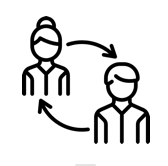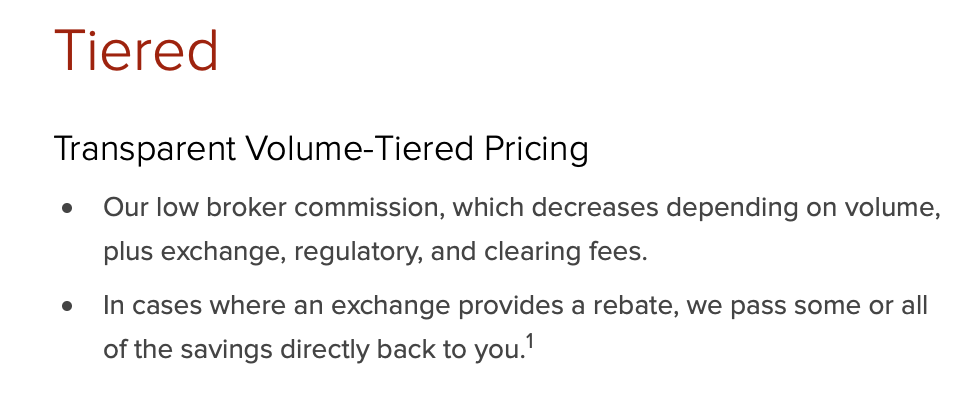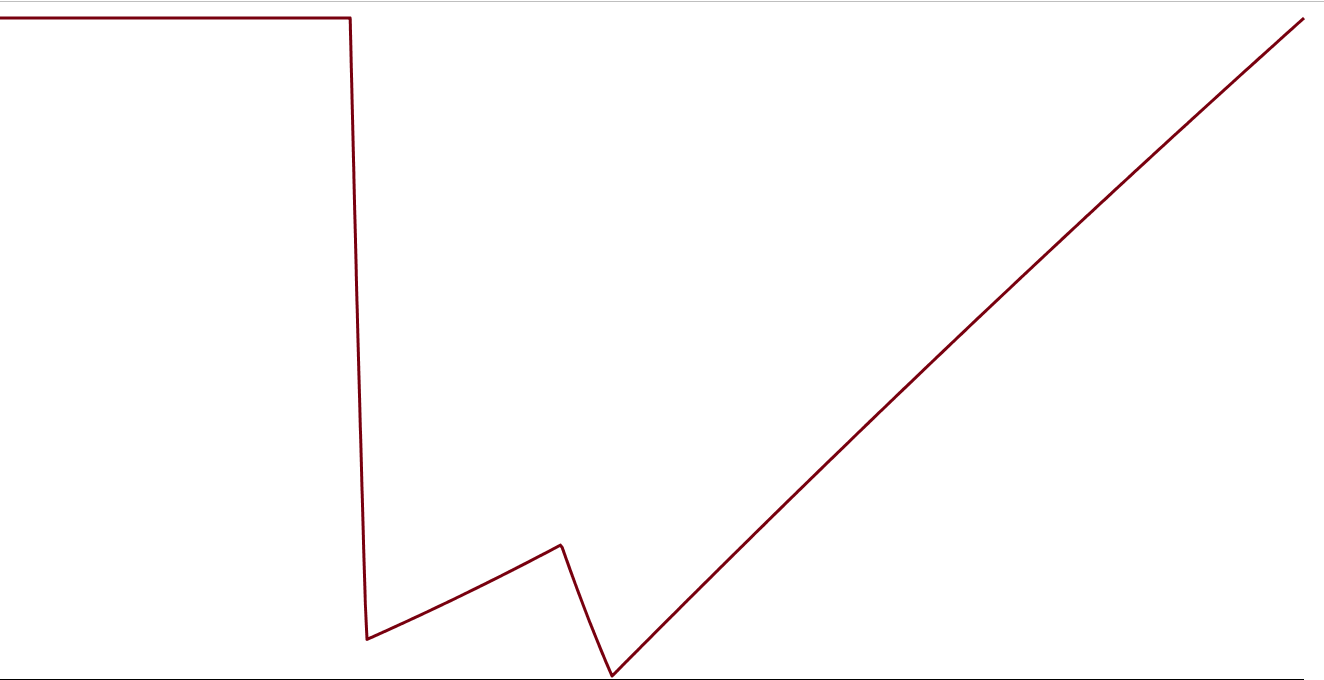Maker-Taker Fees and Liquidity: The Role of
Commission Structures


Michael Brolley and Katya Malinova
IEX Academic Research Conference


What are maker-taker fees?
- Maker of liquidity:
- "resting" limit order
- Taker of liquidity:
- marketable order that "lifts" resting limit order
- Versions:
- Maker-taker fees: charge takers, compensate makers
- Inverted fees: charge makers, compensate takers
- market making is costly => reward for posting
attract posted orders to marketplace
- (maybe) tick size too wide in very competitive markets
allow more aggressive posting and then attract market orders

Why worry about the maker-taker fees?

Perfect
Markets
- m/t split is irrelevant, only net fee matters
- bid and offer prices adjust to account for net fee
- m/t fees not paid directly by investors but brokers
- m/t target specific traders (HFTs) and brokers (retail)
Imperfect
Markets
Conflicts of Interest
- post at low rebate venue: trade faster
- post at high rebate venue: earn more fees
- Battalio et al 2016: harms passive retail orders
Our paper

- brokers' routing practices (measured by e.g. the execution quality of orders)
Taking a Step Back: Key Open Empirical (?!) Questions:
How do M/T fees affect:
- the level of intermediation
- standard measures of market quality
- different market participants (i.e., retail traders, institutional participants, liquidity providers)

- Role of the exchange fee split when (some) traders only pay them "on average", through "flat" broker commissions
Our Paper: Research Question
- Zoom onto one friction: "averaging of the exchange fees"
- Assume: competitive brokers charge "the average" exchange fee through a flat commission.
- Abstract from conflicts of interest, routing conflicts, etc.
- Abstract from other market frictions (e.g., tick size)

- Single asset, no asymmetric information
- Investors value it at either +V (buyers) or -V (sellers)
- Arrive asynchronously (one per period)
Basics of the Model
- Trading:
- Post limit orders or trade with market orders
- Several simplifying assumptions (limit orders good for one period, one limit order/one lot at a time, etc.)
- Maker-taker exchange:
- taker fee for market orders
- maker rebate for limit orders

- Investors/traders differ in their fee structure



Basics of the Model (Cont'd)

- "maker-taker": pay taker fees on market orders & receive maker rebates on limit order trades
- e.g., because they access the exchange directly or b/c or the "tiered plan"
- "flat-fee": pay fixed/flat broker commission
- competitive broker, charges the average of the fees
- same fixed fee, no matter the type of order
- Investors/traders differ in their fee structure
Basics of the Model (Cont'd)

Equilibrium
- All traders want to either buy or sell
- no ex ante "market makers"
- (earlier version of the model had market makers + asym. info)
- Follow Foucault (1999) and Colliard and Foucault (2012):
- Limit orders are priced so that the next trader is exactly indifferent between:
- trading with a market order, paying the spread + taker fee
- submitting a limit order, earning the spread + maker rebate, --- but with execution uncertainty
- Limit orders are priced so that the next trader is exactly indifferent between:

Basic ("Robustness Check") Results
- If all traders are the same
- all are "flat-fee" or all are "maker-taker"
- \(\Rightarrow\) only the net fee charged by the exchange plays an economic role
- back to Colliard and Foucault (2012)
- prices adjust to neutralize the fee changes

Flat fee = weighted average (maker fee, taker fee)
Basics of the Model (Cont'd)
- weighted by the probabilities of "flat fee" investors trading with market vs. limit orders
- flat fees = average exchange fees incurred by the broker
- fee for limit orders
- assumed <0 (rebate)
- fee for market orders
- assumed > 0
maker fee < flat fee < taker fee

How does flat fee affect trading?
maker fee < flat fee < taker fee
ask
bid
ask+flat fee
ask+taker fee
flat fee buyer: spread/2 + flat fee
maker-taker buyer: spread/2 + taker fee
Ceteris paribus:
- "more expensive" for "maker-taker" traders to trade with market orders than for "flat-fee" traders
Consider a buyer
"Flat-fee" traders accept a wider range of quotes

How does flat fee affect trading?
ask
bid
bid\(+\)flat fee
bid\(-\)maker rebate
flat fee buyer: get spread/2 - flat fee
maker-taker buyer: get spread/2 + maker rebate
Ceteris paribus:
- limit orders are more attractive for "maker-taker" traders than for "flat-fee" traders
Consider a buyer
"Maker-taker" traders post better quotes

How does flat fee affect trading?
- "Flat-fee" investors are willing to trade at wider spreads using market orders
- "Maker-taker" traders are willing to post limit orders at "tighter spreads"
\(\Rightarrow\) for a given limit order book state
- When a "maker-taker" trader prefers trading with with a market order to submitting own limit order, so does the "flat-fee" investor.
- When a "flat-fee" investor prefers to use a limit order, so does the "maker-taker" trader

Recall the equilibrium:
- Post limit orders at a price to make the next period trader exactly indifferent between market order and limit order
- "Maker-taker" and "flat-fee" traders are willing to accept different prices
Earn a smaller spread but with a larger probability
Earn a larger spread but with a smaller probability
- \(\Rightarrow\) can choose to price limit orders in two ways:
- at "narrow" spreads \(\to\) next period, all traders on the right side of the market send market orders
- at "wide" spreads \(\to\) next period, only "flat-fee" traders send market orders and "maker-taker" traders prefer to post own limit orders

Equilibrium
- The trade-off between smaller spread vs. larger acceptance probability depends on the fractions of flat-fee vs. maker-taker traders.
- (Almost) all traders are "maker-taker"
- \(\to\) need to send limit orders that are attractive enough to these
- \(\to\) all traders submit limit orders at "narrow spreads"
- \(\to\) all traders use market orders whenever there is an order in the limit order book on the "right side of the market"

Equilibrium
- (Almost) all traders are "flat-fee"
- \(\to\) posting narrow spreads doesn't affect the probability of execution
- \(\to\) all traders submit limit orders at "wide spreads"
-
\(\to\) "flat-fee" traders use market orders whenever possible, and maker-taker traders only use limit orders
- \(\to\) direct market access clients effectively act as "market makers" simply because of the fee structure!
- not because they are "fast" or "no need to trade" ...
Equilibrium
- 5 different equilibria types, depending on the fraction \(\lambda\) of "flat-fee" investors:

0
\(\lambda_1\)
\(\lambda_2\)
\(\lambda_3\)
\(\lambda_4\)
1
- maker-taker traders post narrow spreads
- flat-fee traders post wide spreads
- maker-taker traders use market orders only when spreads are narrow
- flat-fee investors use market orders whenever there is an order on the "right side of the market
- all post narrow spreads
- all use market orders
Type 1
Type 3
Type 5
Type 2
Type 4
- all post wide spreads
- only flat-fee investors use market orders
mixed strategy
mixed strategy
No distortion
Distortion

Equilibrium Implications
- If (and only if) only very few traders pay flat fees:
- no distortion
- limit orders trade as long as they are on the "right side of the market"
- maker-taker split does not impact trading volume or welfare
- For larger fractions of flat-fee investors (\(\lambda>\lambda_1)\):
- maker-taker traders do not trade against flat-fee trader limit orders (spreads are too wide)
- \(\to\) lower volume & unrealized gains from trade
- \(\to\) maker-taker/asymmetric fees are detrimental to welfare

- With trading distortion (type 2-5 equilibria, i.e. sufficiently large fraction of flat-fee investors/fee asymmetry):
- Empirically, maker-taker (DMA) traders will appear acting as market makers. Relatively to flat-fee investors:
- post narrower spreads
- large probability of trading with limit orders
- Brokers that charge flat fees will see their clients send relatively more market(able) orders.
- Maker-taker traders earn larger profits than flat-fee investors.
- Empirically, maker-taker (DMA) traders will appear acting as market makers. Relatively to flat-fee investors:
Establishing causality from historical data is challenging
Equilibrium Implications

- Thresholds depend on the maker-taker fee split
- Lower fee asymmetry (i.e., smaller difference between the taker and the maker fees) \(\Rightarrow\) larger \(\lambda's\)
- \(\Rightarrow\) larger \(\lambda_1\) \(\to\) larger "no distortion" region
Equilibrium Implications

- Thresholds depend on the maker-taker fee split
- As maker-taker fees change:
- thresholds change
- may switch across different equilibria types
- \(\to\) non-monotonic effects on
- market quality
- trading volume
Equilibrium Implications
Equilibrium: Trading Volume

0
\(\lambda_3\)
\(\lambda_4\)
1
- narrow spreads
- all use market orders
Type 1
Type 3
Type 5
only flat-fee investors use market orders

\(\lambda_1\)
\(\lambda_2\)
- MT: market orders only when spreads are narrow
- FF: market orders for all spreads
Highest
Volume

- Empirically measuring "cum-fee" spreads is challenging:
- typically overestimate spreads paid by the "flat-fee" investors
- Our model:
- changes in "cum-fee spread" = "spread/2 + taker fee" does not proxy for changes in "spread/2 + fees paid"
Equilibrium Implications

Final Thoughts
- In our model:
- If low enough fee asymmetry (e.g., no rebates or low rebates)
- \(\to\) no distortions
- fee split doesn't matter, only the net exchange fee does
- Limitation: "flat/fixed fee" is the only friction
- no asymmetric information/adverse selection
- no complexity/market fragmentation
- no conflicts of interest/routing decisions

Final Thoughts: Routing Conflicts
- Exchange 1:
- low maker fee (or rebate)
- high taker fee
- Exchange 2:
- low taker fee (or rebate)
- high maker fee
Broker:
client limit orders
client marketable orders
Problem:
- long queue & low exec probability
- trade after Exchange 2 limit orders
- adverse selection
- Any asymmetry between maker and taker fees may distort routing!
- Not just rebates!
@katyamalinova
malinovk@mcmaster.ca

slides.com/kmalinova
https://sites.google.com/site/katyamalinova/